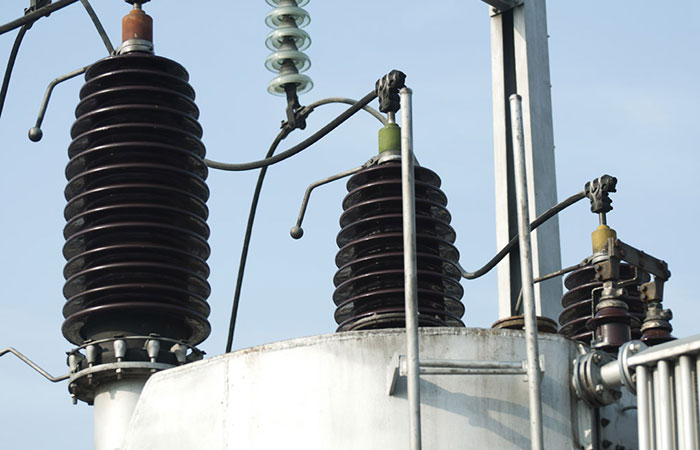Power line insulators mainly have the following types: suspension insulators, pillar insulators, porcelain insulators, glass insulators, composite insulators, low-voltage insulators and high-voltage insulators, fouling-resistant insulators, and DC insulators.

1. Suspension insulator: Widely used in the insulation and mechanical fixing of high-voltage overhead transmission lines and soft busbars of power generation and substation. Among the suspension insulators, they can be divided into disk-shaped suspension insulators and bar-shaped suspension insulators. Disc-shaped suspension insulators are the most widely used insulators for transmission lines. Rod-shaped suspension insulators are widely used in Germany and other countries.
2. Pillar insulator: It is mainly used for insulating and mechanically fixing busbars and electrical equipment in power plants and substations. In addition, the pillar insulator is often used as a component of electrical equipment such as disconnect switches and circuit breakers.
Among the pillar insulators, they can be divided into pin-type pillar insulators and bar-type pillar insulators. Needle-type pillar insulators are mostly used in low-voltage distribution lines and communication lines, and bar-shaped pillar insulators are mostly used in high-voltage substations.
3. Ceramic insulator: insulators made of electrical ceramics. Electrical ceramics are made of quartz, feldspar, and clay as raw materials baked. The surface of the porcelain insulator is usually covered with porcelain enamel to improve its mechanical strength, waterproof infiltration, and increase the smoothness of the surface. Among all kinds of insulators, porcelain insulators are most commonly used.
4. Glass insulators: insulators whose insulating parts are made of tempered glass. Its surface is in a state of compression pre-stress, such as cracks and electrical breakdown, glass insulators will break into small pieces, commonly known as “self-explosion”. This feature makes the glass insulator in operation without “zero value” detection.
5. Composite insulators: also known as synthetic insulators. The insulator is composed of glass fiber resin core and organic material sheath and skirt. Its characteristics are small size, lightweight, high tensile strength, and excellent resistance to fouling and flashing. However, the aging resistance is not as good as that of porcelain and glass insulators.
Composite insulators include rod-shaped suspension insulators, insulating cross-arms, pillar insulators, and hollow insulators. Composite bushings can replace the porcelain bushings used in a variety of power equipment, such as transformers, lightning arresters, circuit breakers, capacitive bushings, and cable terminals. Compared with the porcelain sleeve, it has the advantages of high mechanical strength, lightweight and small size tolerance, but also can avoid the damage caused by bursting and breaking.
6. Low-voltage insulators and high-voltage insulators: low-voltage insulators are insulators used for low-voltage distribution lines and communication lines. High-voltage insulators are insulators used for high-voltage and ultra-high-voltage overhead transmission lines and substations. To meet the needs of different voltage levels, different numbers of single insulators of the same type are usually used to form insulator strings or insulating pillars of multiple sections.
7. Fouling insulator: Mainly it takes the measure of increasing or enlarging the insulator umbrella skirt or umbrella prism to increase the creepage distance of the insulator, to improve the electrical strength of the insulator under fouling conditions. At the same time, the shape of the skirt structure is changed to reduce the natural accumulation of dirt on the surface to improve the antifouling performance of the insulator.
The creepage distance of fouling-resistant insulators is generally 20% to 30% higher than that of ordinary insulators, or even more. China’s power grid fouling flash-prone areas are used to double umbrella structure shape of the fouling insulator, such insulators self-cleaning ability, easy to clean manually.
8. DC insulator: mainly refers to the disc insulator used in DC transmission. DC insulators generally have a longer creepage distance than AC fouling insulators, and their insulating parts have higher body resistivity, and their connecting fixtures should be equipped with sacrificial electrodes to prevent electrolytic corrosion.
